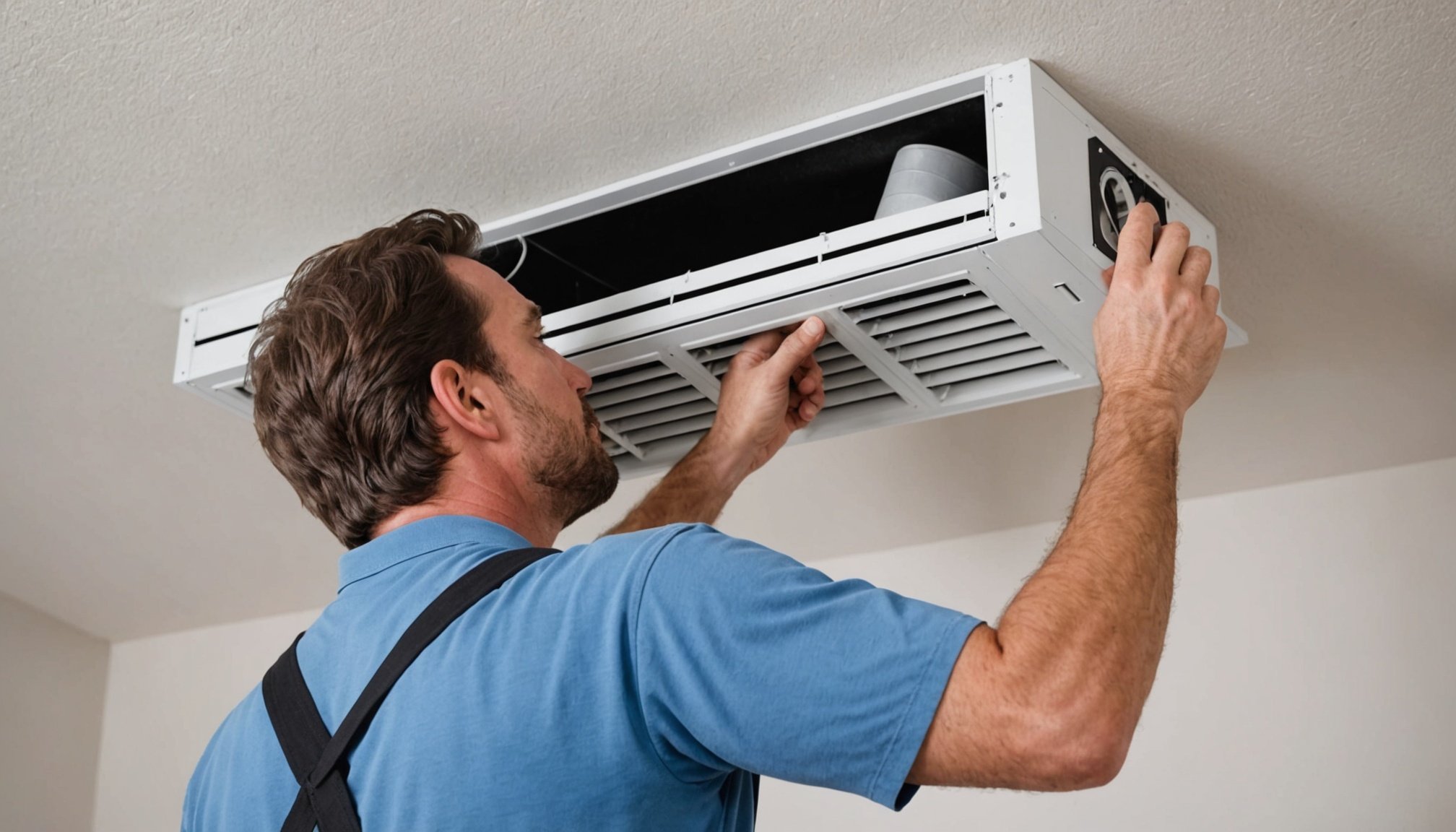Improving indoor air quality begins with addressing the hidden contaminants in air ducts. Dust, allergens, and pollutants accumulate over time, affecting respiratory health and overall comfort. Understanding various duct cleaning methods ranging from professional services to DIY approaches allows you to make informed choices. This insight helps reveal how targeted cleaning can significantly reduce airborne irritants, making your living environment healthier and more comfortable.
How Duct Cleaning Improves Indoor Air Quality
Maintaining indoor air quality is essential for a healthy living environment, and thorough air duct cleaning plays a vital role in this process. Over time, dust, allergens, and various pollutants accumulate within air ducts, which can then circulate throughout a home or office. This circulation significantly diminishes indoor air quality and poses risks to respiratory health.
Also read : Discover stunning hardwood conservatories available in kent
The primary health benefits of professional air duct cleaning arise from its ability to remove dust and contaminants trapped in ductwork. These particles often include allergens such as pollen, pet dander, and mold spores, which exacerbate respiratory conditions like asthma and allergies. By effectively eliminating these irritants, air duct cleaning helps reduce the frequency and severity of related health issues, contributing to improved overall well-being.
Scientific research consistently supports the positive impact of duct cleaning on air quality. Studies indicate that homes receiving regular duct maintenance experience lower levels of airborne dust and fewer irritants, leading to measurable improvements in respiratory function. This evidence highlights the importance of investing in air duct cleaning as a practical solution for those seeking healthier indoor environments.
In parallel : Restoring Elegance: Essential Tips for Revamping Your Historic Stone Fireplace in a Cotswold Cottage
For those interested in more detailed information on maintaining clean air, exploring reputable Duct Cleaning Services can provide valuable guidance and professional assistance tailored to specific needs.
Essential Duct Cleaning Options Explained
Understanding your duct cleaning options is crucial for maintaining healthy indoor air quality. One primary choice is professional duct cleaning, which involves experts using specialized equipment to thoroughly remove dust, allergens, and contaminants from your HVAC system. Professionals have access to advanced tools such as high-powered vacuums and rotary brushes, enabling them to clean hard-to-reach areas effectively and ensure comprehensive debris removal.
In contrast, DIY duct cleaning methods often rely on simpler, readily available cleaning tools, such as vacuum attachments and brushes. While these can help reduce surface dust within vents, they generally lack the power and reach of professional-grade equipment, which limits their effectiveness in completely removing buildup inside ductwork.
The main difference between the two approaches lies in depth and thoroughness: professional duct cleaning offers a deeper, more efficient clean, helping improve airflow and reduce allergens significantly. DIY methods may be suitable for minor, surface-level maintenance but usually cannot match the thoroughness or health benefits of professional services. For lasting improvements and to ensure optimal system performance, investing in professional duct cleaning is often the better choice. For additional guidance on maintaining clean and healthy air, exploring dedicated Duct Cleaning Services is recommended.
Comparing Effectiveness and Cost of Duct Cleaning Solutions
When evaluating duct cleaning effectiveness, understanding the balance between cost and performance is crucial. Professional duct cleaning services generally range in price depending on the size of the property and the complexity of the system. Typically, homeowners can expect to pay between $300 and $500, whereas larger commercial systems may incur higher costs. In contrast, DIY duct cleaning solutions are significantly less expensive but often lack thoroughness and the specialized equipment required for deep cleaning.
The key factors influencing the cost of duct cleaning include the use of advanced equipment such as high-powered vacuums and rotary brushes, as well as the expertise of trained technicians who can identify and address potential issues beyond surface debris. Professionals also emphasize the importance of cleaning frequency, recommending annual or biennial services to maintain optimal indoor air quality. While DIY attempts might save money upfront, they often fall short in removing embedded dust, mold, and allergens, diminishing overall duct cleaning effectiveness.
From a value perspective, investing in professional services tends to offer long-term savings by preventing costly HVAC repairs and improving system efficiency. For both homeowners and businesses, the enhanced air quality and reduced respiratory risks provide benefits that extend beyond immediate financial considerations. When deciding between options, assessing the scope of service and equipment quality alongside price helps ensure the best decision.
Choosing a Reliable Duct Cleaning Provider
Selecting the right duct cleaning provider is crucial to ensuring your HVAC system functions efficiently and your indoor air quality improves. When selecting professionals, always start by verifying their certifications. Certifications indicate that the provider follows industry standards and employs trained technicians. For example, look for qualifications from recognized organizations such as the National Air Duct Cleaners Association (NADCA).
In addition to credentials, evaluating a company’s service quality through customer reviews and references provides valuable insights. Positive feedback and a strong track record suggest reliability and effective duct cleaning. Ask the provider for references or examples of past work to confirm their experience.
A quality duct cleaning service typically includes a thorough inspection, removal of debris and contaminants, and cleaning of all duct components, including registers and HVAC units. Expect clear communication about the process, transparent pricing, and a warranty or guarantee for their work.
By carefully considering certifications, reviews, and service standards, you can confidently select a duct cleaning provider who delivers professional and dependable results, improving both system performance and air quality.
Best Practices for Maintaining Indoor Air Quality Post-Cleaning
Maintaining excellent indoor air quality after a thorough cleaning involves consistent air duct maintenance and diligent care of your HVAC system. Regular filter changes are crucial. Filters trap dust, pollen, and other airborne particles, preventing them from recirculating indoors. Experts recommend replacing filters every 1 to 3 months, depending on usage and filter type, ensuring your HVAC system operates efficiently and air remains clean.
Beyond filter upkeep, taking preventative measures can enhance air quality further. Keep vents and registers free from obstructions and dust buildup by wiping them regularly. Using a programmable thermostat to maintain steady temperature and humidity levels discourages mold growth and reduces airborne irritants. Additionally, limiting indoor pollutants such as smoking or the use of harsh chemicals will support lasting improvements in air quality.
The frequency of cleaning varies by household needs. Homes with pets, smokers, or allergy sufferers may benefit from more frequent duct cleaning and HVAC upkeep. In contrast, households with fewer indoor contaminants might extend intervals between cleanings. Generally, scheduling professional air duct maintenance every 3 to 5 years complements routine filter changes and keeps your system running smoothly. For specialized guidance linked to your specific environment, consider consulting with experts in Duct Cleaning Services to align strategies with your needs. This combined approach ensures breathing air remains fresh and safe throughout the year.











